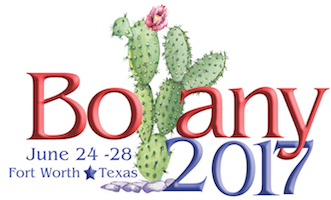| Abstract Detail
Paleobotany Han, Meng [1], Manchester, Steven R [2], Wu, Xinkai [1], Jin, Jianhua [3]. Earliest fossil endocarps of Menispermaceae from the Paleocene of eastern Asia. The Menispermaceae (Ranunculales), commonly known as the moonseed family, are a clade of dioecious lianas or scandent shrubs (rarely herbs, erect shrubs, or small trees) that are primarily distributed in the tropical regions of the World. There are ~72 genera and 520 species in the family. The classification of Menispermaceae is principally based on fruit characters. Their fruits are usually single-seeded, with leathery or membranaceous exocarps, thin and fleshy or fibrous mesocarps and woody endocarps. The shape of the endocarp varies strongly from straight, boat-shaped, horseshoe-shaped to hairpin-shaped. Moreover, the endocarp is variously ornamented which provides important taxonomic features for distinguishing between and within genera. This moonseed family is well-known for its fossil records. Previously, the earliest confirmed fossils of this family were reported from the Paleocene of South America, North America and Europe. By the Eocene, the family had attained a widespread distribution, with occurrences in North America, Europe, Asia and South America. Oligocene records, by contrast, are mainly limited to Eurasia. In Miocene and Pliocene, they were widely dispersed in North America, South America, Europe, Africa, and Asia. Recently, some new Menispermaceae fossil specimens were collected from the middle Paleocene Buxin Formation of Sanshui Basin of Guangdong Province, South China. The age of the site is based on co-occurring mammal, ostracod fossils and associated radiometric dates. Four new species of Menispermaceae are recognizable based on a preliminary investigation and CT scanning is expected to provide improved documentation of these specimens which are preserved as 3-dimensional molds and casts. The specimens represent endocarps that were bony or woody, horseshoe shaped; outline of endocarp obovate to rounded; length 2.3 to 5.1mm, width 2.4 to 3.8mm, with a keel running along the dorsal surface; only one lateral crest on each side of the endocarp; 12 to 23 lateral ribs occur on the dorsal side. These new menispemaceous endocarps described from Sanshui Basin indicate the earliest Menispermaceous occurrence in eastern Asia. They confirm the presence of Menispermaceae in the Paleocene of South China, which gives us new evidence for the origin and spread route of this family. These fossils are also important as the first carpological remains to be reported from the Paleocene of Sanshui Basin.
Log in to add this item to your schedule
1 - Sun Yat-sen University, School of Life Sciences, 135 Xingangxi Road, Guangzhou, Guangdong, 510275, China
2 - University Of Florida, Florida Museum Of Natural History, PO BOX 117800, Gainesville, FL, 32611, USA
3 - Sun Yat-sen University, School Of Life Sciences, 135 Xingangxi Road, Guangzhou, Guangdong, N/A, 510275, China
Keywords:
Menispermaceae
endocarps
Paleocene
Sanshui Basin
East Asia.
Presentation Type: Oral Paper
Session: 7, Cookson/Moseley award presentations
Location: Sundance 4/Omni Hotel
Date: Monday, June 26th, 2017
Time: 10:45 AM
Number: 7003
Abstract ID:147
Candidate for Awards:Isabel Cookson Award,Maynard F. Moseley Award |



